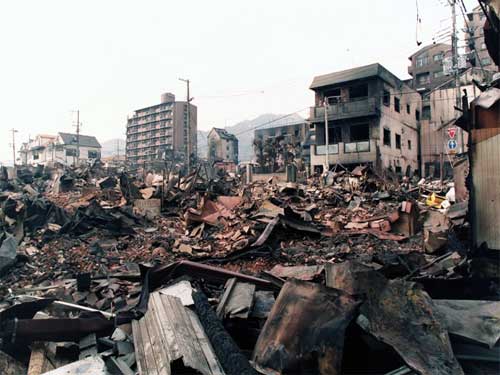Tornados are rare but not unheard of in Utah (about two per year are reported). Recently a tornado slammed into Manti in central Utah. The twister tore roofs off houses, downed power lines, uprooted trees and left a trail of destruction a block wide and about ten blocks long. A larger tornado struck Salt Lake City in 1999. That tornado tore through downtown and caused more than $150 million in damage. In other areas, they are quite common. In any case, it wise to have a plan.

Here are a few things we can do, courtesy of the Institute for Business and Home Safety:
- Decide in advance where you will take shelter (a local community shelter, perhaps, or your own underground storm cellar or in-residence “safe” room). When a tornado approaches, go there immediately. If your home has no storm cellar or in-residence “safe” room and you have no time to get to a community shelter, head to the centermost part of your basement or home — away from windows and preferably under something sturdy like a workbench or staircase. The more walls between you and the outside, the better.
- Become familiar with your community’s severe weather warning system and make certain every adult and teenager in your family knows what to do when a tornado “watch” or “warning” sounds. Learn about your workplace’s disaster safety plans and similar measures at your children’s schools or day care centers.
- Study your community’s disaster preparedness plans and create a family plan in case you are able to move to a community shelter. Identify escape routes from your home and neighborhood and designate an emergency meeting place for your family to reunite if you become separated. Also establish a contact point to communicate with concerned relatives.
- Put together an emergency kit that includes a three-day supply of drinking water and food you don’t have to refrigerate or cook; first aid supplies; a portable NOAA weather radio; a wrench and other basic tools; a flashlight; work gloves; emergency cooking equipment; portable lanterns; fresh batteries for each piece of equipment; clothing; blankets; baby items; prescription medications; extra car and house keys; extra eyeglasses; credit cards and cash; important documents, including insurance policies.
- Move anything in your yard that can become flying debris inside your house or garage before a storm strikes. Do this only if authorities have announced a tornado “watch,” however. If authorities have announced a tornado “warning,” leave it all alone.
- Don’t open your windows. You won’t save the house, as once thought, and you may actually make things worse by giving wind and rain a chance to get inside.
- Don’t try to ride out a tornado in a manufactured home. Even manufactured homes with tie-downs overturn in these storms because they have light frames and offer winds a large surface area to push against. In addition, their exteriors are vulnerable to high winds and wind-borne debris.
For more information about Tornados, visit NOAA‘s website, detailing the basics about tornados and things we can do to prepare for them.









